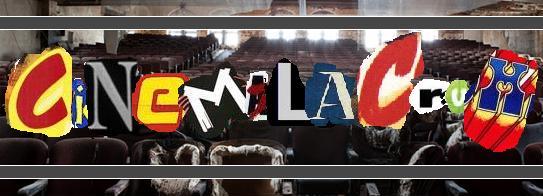The previous two texts for this wonderful Classic Film Book Challenge have been decidedly academic, focusing on theoretical readings of a historical and cultural nature. Admittedly this is my ideal point of film reading, but since it is the summer and I needed a bit of a breather, I decided to chase down a copy of Killer Kaiju Monsters, which may not seem to fit within the parameters of the Classic Film Book guidelines, but considering that much of the classic kaiju works exist within the years 1956-1968 it does indeed suffice, and the book focuses precisely on these years, while also looking at the extensive cultural influences of the unique genre. For those of you who are uncertain about what exactly a kaiju is, might have caught the name in this summer's big blockbuster Pacific Rim and now associate it with huge sea monsters. To a considerable degree this is precisely what they are, although they include the likes of Godzilla and his various frenemies. In essence a kaiju is any sort of large monster that has its eyes set on destroying things, although in recent years it has evolved to be post-genre and highly revisionist. Nonetheless, it still proves to be one of the more adored genres for many cinephiles, who either love the works in all their nonsensical glory, or simply, like myself, have a major nostalgia for the works. The kaiju film is distinct, bizarre and in some cases quite trippy, so it should be no surprise that what one finds in Ivan Vartanian's Killer Kaiju Monsters is nothing short of unusual. The film is split into various sections some introducing new readers to the genre, while others focus on the various creatures that occupy the screens of the still lively genre, but Vartanian also incorporates posters and screenshots as a means to push the visual elements of the genre as well. In fact, one could almost argue that Killer Kaiju Monsters is far more a coffee table book than a piece of academic writing, but the same argument could be made working in the opposite direction, because somebody just expecting to look at cool pictures and sketches, will come away with a great understanding of the cinematic history of kaiju and a whole new compendium of monsters with which to impress their nerdy friends. Also, if all of these elements fail to draw out your curiosity, the text also includes a cutout to make your very own kaiju paper doll, which is one of many cool asides in this highly engaging text.
I know that this is a highly specialized read and one that is not wholly academic, but being somebody who has read, or is either currently working through the other texts available on this topic, I can attest to the simplicity of Killer Kaiju Monsters as being its selling point. Indeed, it will be somewhat impossible to learn the minutia of production or the nuclear warfare implications latent within the films, particularly the first Godzilla film, but it is not also preachy and absurdly personalized like say Godzilla on My Mind, which to date is my biggest disappointment in film based reading. Other kaiju texts, make foolish assumptions that since they are working within a distinct field that their personal opinion suffices for academic grounding. Between the humorous images of cartoon Godzilla offspring and full page spreads of Mothra shooting beams upon Tokyo, one has a better time coming to watch the evolution of kaiju cinema through Vartanian's work than any other text availabe on the subject. Again, I will admit that some of my adoration for this particular book comes from its quirkiness, but that is not intended to dismiss its value. Considering that many of the major kaiju films have yet to make their American release in any format, some of the research done for this text is the first of its kind, yet avoids all the pretense of more high-minded approaches to the same subject. Yet, I still feel it necessary to remind readers that this work is anything but distancing, Vartanian wants both the newcomers to kaiju as well as the diehard fanatics to take something away from his book, which perhaps helps explain its decidedly post-modern structure, wherein a fully academic text would be derailed by a drawn-out description of Gidorah's special powers and theoretical weight versus that of Rodan, it is well at home in Killer Kaiju Monsters. Similarly, if this text were solely a coffee table book the extensive looks at political themes in the films would be off-putting to the casual reader. Much like the kaiju films themselves, Killer Kaiju Monsters exists in a perfect space between low culture schlock and high theory cinema.
Best Film Discovery of the Book: While it lists all of the films in the genre, it decides to give some discussion to more than others, particularly when they relate to Godzilla. One such film was Godzilla vs. Megalon, which also featured the first onscreen presence of Jet Jaguar, whose theme song is enough to make the entire movie worth viewing. I suggest it as a discovery, because I had avoided it under the misguidance of it being a lesser kaiju work, indeed it is one of my favorites, now third only to the original Godzilla movie and the psychedelic Godzilla vs. The Smog Monster. For what this book offers, it is insanely cheap. If you find yourself in the market for something to flip through or have as a conversation piece, I would suggest looking no further than this wonderful text.





I'm flexible with the rules and this book definitely counts! I wasn't at all familiar with the term "Kaiju Monsters" so your review was a nice intro for me. Thanks for that and for your great review!
ReplyDelete